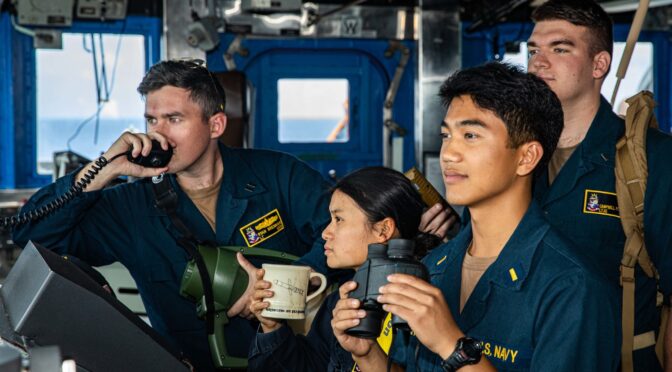By Nicholas Romanow
Cyber. Missiles. Satellites. Drones. Most of the trending topics in current military affairs fixate on technology and material factors of warfare. These topics are certainly pivotal parts of the security landscape, but they are far from the full story. Even the most advanced autonomous systems are designed for the purpose of providing the human warfighter with a capability they would not otherwise have. The study of military affairs is incomplete without a thorough examination of how military personnel are recruited, trained, and retained.
While militaries often boast of their technical prowess, they are fundamentally human organizations. Wars are fought by and for people. Military technology will only ever be a tool used to advance the objectives and missions executed by the people who compromise militaries. We need look no further than recent events in Ukraine to see how a much larger and supposedly more capable Russian military was rendered subpar by deteriorating morale, manning shortfalls and gimmicks, and is now forced to conscript citizens of questionable military suitability to sustain its war of aggression. The human factor is difficult to quantify and measure, but this does not obscure its centrality to military and maritime operations. The human element of war is ignored at great peril.
“Taking care of our people” is more than just a slogan. It is a core mission. How well leaders cultivate the talents of their people is a direct reflection of their competence as a leader. Many officers seek their commission out of a desire to lead and serve, but junior officers must first be led and served by their seniors who can set the right example and show them the way. Discussing best practices in core leadership functions is vital not only for the workforce writ large, but for empowering emerging leaders with the knowledge and skills to lead others into an uncertain era of strategic competition.
This week, CIMSEC will publish a series of articles on this subject. As this challenge is relevant to members of all services at every career stage, we are fortunate to publish a wide range of perspectives. Below are the articles and authors being featured in this series, which may be updated with further submissions as Human Factors Week unfolds.
“The Defense Department’s Unfinished DEI Business: A 10-Point Plan,” by Captain John Cordle, (ret.), and LCDR Reuben Keith Green, (ret.)
“Groton as a Case Study for Building Naval Capital Towns,” by Ryan C. Walker
“Shifting the Role of Leader and Led: Using Year Group Cohorts to Accelerate Marine Corps Force Design,” by Travis Reese
“Weaponize PME to Improve the Force,” by Bobby Holmes
“Educating Maritime Geostrategists for the Naval Services,” by Drake Long
Ensign Nicholas Romanow, U.S. Navy, is a graduate of the University of Texas at Austin. He is currently assigned to Fort Meade, Maryland, and working toward his qualification as a cryptologic warfare officer. He was previously an undergraduate fellow at the Clements Center for National Security. He is CIMSEC’s Social Media Coordinator.
The views presented are those of the author and do not necessarily represent the views of the Department of Defense, Department of the Navy, or any other military or government agency.
Featured Image: EAST CHINA SEA (Aug. 24, 2022) Sailors in the pilot house of the Ticonderoga-class guided-missile cruiser USS Chancellorsville (CG 62) conduct force protection training in the East China Sea, Aug. 24, 2022. (U.S. Navy photo by Mass Communication Specialist 2nd Class Justin Stack)

